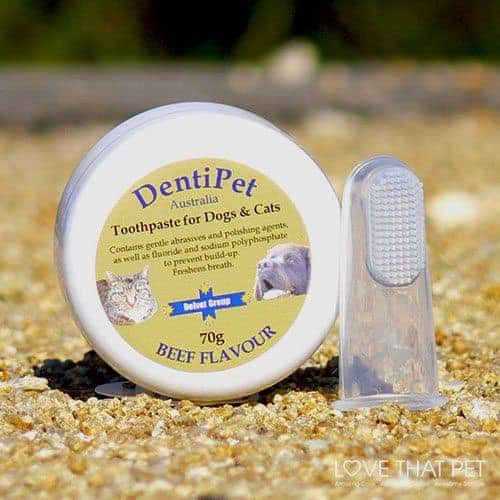Brushing your Cat’s Teeth: Dental Care for your Pet
Does your cat have smelly breath? A bit of prevention can go a long way towards keeping your pet’s teeth healthy and ultimately save you money.
An estimated 80% of pets have dental disease by 3 years of age. Unfortunately, many cats develop significant pain and infection due to unhealthy teeth, as well as being banished from the bedroom.
What is periodontal disease?
While humans tend to get caries or holes in our teeth, cats are more at risk of periodontal disease, which is disease around the base of the tooth near the gum line. The accumulation of sticky plaque, made up of bacteria, proteins and food, hardens to form calculus on the teeth.
This hard calculus causes inflamed and bleeding gums (gingivitis) and as the condition progresses, there is loss of attachment between the gum and the tooth. As the gum separates from the tooth, little pockets of infection develop around the tooth. The bacteria around damaged teeth leads to the foul-smelling breath and illness associated with dental disease.
Cats that have daily brushing of their teeth will have much fresher smelling breath and be less inclined to need costly dental treatment. Getting into the habit when your kitten is young is the best way to start, but any cat can be trained with enough patience and lots of food rewards.
What do I need?
Pet toothpaste are flavored like meat pastes, so they become part of the reward for allowing brushing. You can get various flavors like chicken or even cheese. Human toothpaste is not meant to be swallowed and pets will hate that minty foaming stuff that we like, so a pet toothpaste is a very worthwhile investment.
There are various different styles of toothbrush. You can use a soft baby’s toothbrush or a finger-brush. Just make sure the brush is soft to avoid damaging the gums.
Teaching your cat to tolerate brushing
To teach your cat to accept brushing, first start out with some toothpaste on your finger and touch the teeth, allowing your pet to lick the paste. If this is tolerated, get a face washer or the edge of a towel and dip it in water and rub it in the paste, then onto your cat’s teeth. Gradually increase the contact time as your cat’s tolerance increases. Use lots of treats to reward your cat every step of the way. After the washer is accepted, switch to a soft toothbrush or finger brush.
Technique tips
- Aim for 5 seconds on each tooth and brush once daily.
- Pay particular attention to the base of the tooth, aiming for a 45° angle with the gum-line.
- Avoid a vigorous side-to-side action that will damage the gums, gently use a circular, flicking motion along the gum-line.
- Brush only the outside of the teeth, the tongue will take care of the inside.
- If your cat has bleeding gums after brushing, take him to the vet for a check-up before doing more brushing.
What if my pet has lots of discoloration, plaque or calculus?
If your cat’s breath is smelly, there is discoloration, recession of the gums and a large amount of calculus you will need a professional dental clean. No amount of brushing will get hard calculus off the teeth.
A scale and polish using an ultrasonic scaler like your dentist uses needs to be performed under anesthesia to do the job right. Once the teeth are nice and smooth and white, preventative brushing will slow down the build-up. It only takes 3 days for plaque to start reforming, so ideally start your training with tooth-brushing before the dental, so that you know you can effectively brush all the teeth once your pet has recovered from the procedure. If the teeth are too painful, this may not be possible, but you may be able to at least train your pet to allow touching around the face, mouth and get him used to the toothbrush and paste.
Most Vets will suggest waiting 2-3 days after a dental clean before brushing, so you want to be sure you can effectively brush your pet’s teeth from the start.
The post Brushing your Cat’s Teeth: Dental Care for your Pet appeared first on VetBabble.





Post a Comment